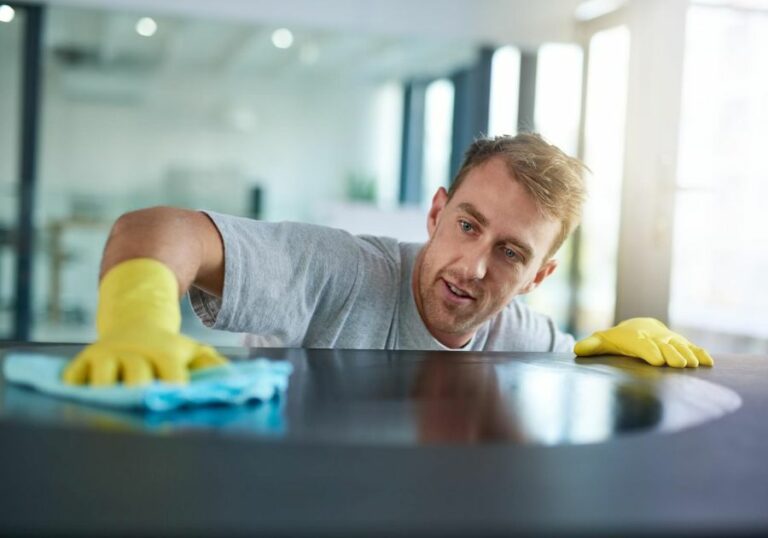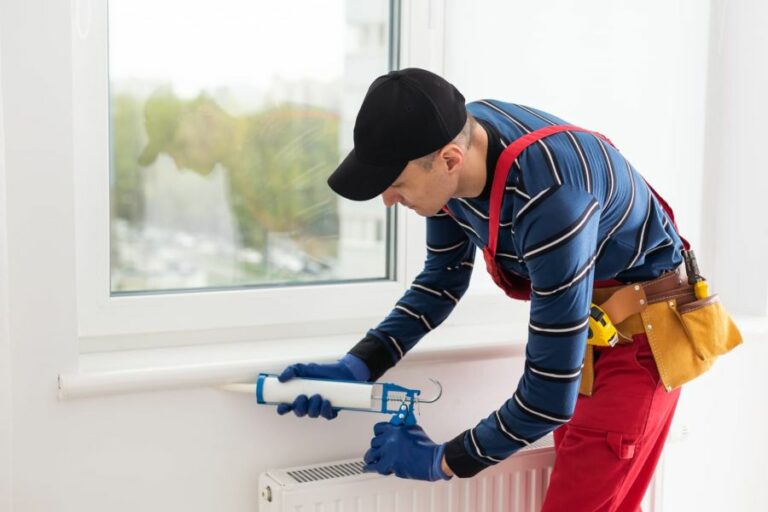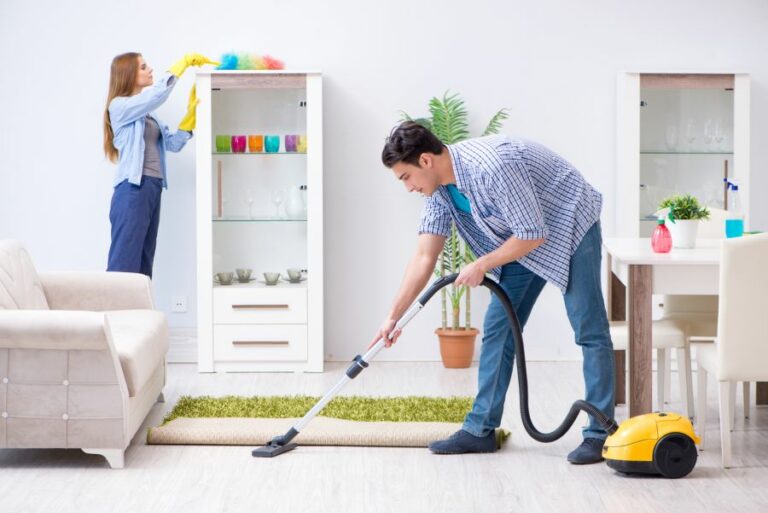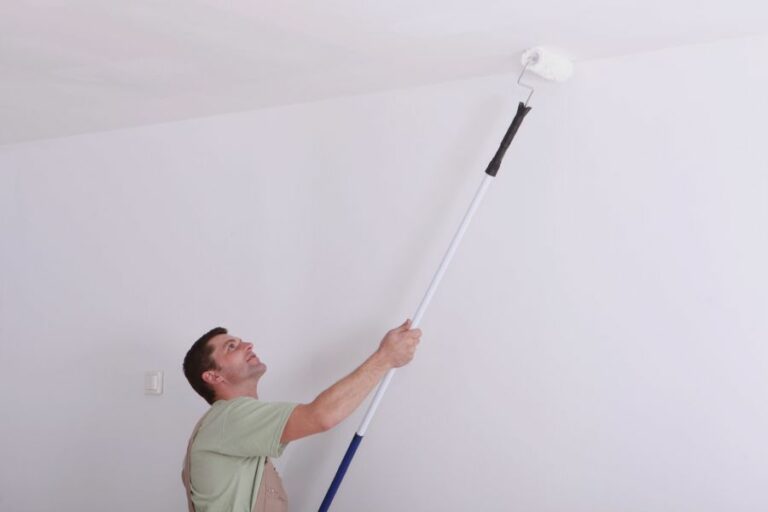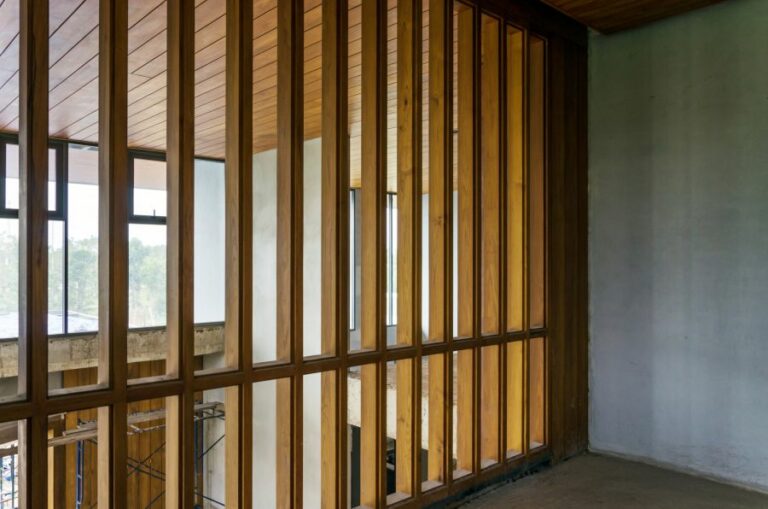Comparing Abrasives For Effective Surface Preparation
Are you looking to achieve the perfect surface for your next project but unsure which abrasive material will deliver the best results? Fret not; we have the answers! With our extensive knowledge in surface preparation, we’re here to guide you in comparing various abrasives for maximum effectiveness.
Comparing abrasives for effective surface preparation:
In surface preparation, choosing the right abrasive is crucial. Two main categories are bonded and coated abrasives, further divided by material, including aluminum oxide, silicon carbide, zirconia, ceramic, and garnet. Select the appropriate abrasive based on material, desired finish, job requirements, and budget to achieve optimal results.

Looking to improve your surface preparation game? Dive deeper into the world of abrasives and uncover the most efficient materials to achieve optimal results. Keep reading to explore key comparisons, innovative techniques, and more!
Contents
- 1 Analyzing Abrasives for Efficient Surface Prep
- 2 Exploring the Distinction between SA 2.5 and SA 3
- 3 Selecting the Ideal Abrasive Media for Your Needs
- 4 Identifying the Top Sandblasting Abrasive Choice
- 5 Impact of Abrasive Dimensions on Surface Profiling
Analyzing Abrasives for Efficient Surface Prep
Surface preparation is a critical step in various industries, including painting, metalworking, woodworking, flooring, and automotive. Choosing the right abrasive is essential for achieving quality and durable finish.
• Types of Abrasives
Abrasives can be divided into two main categories: bonded abrasives and coated abrasives. These categories can be further broken down into subcategories based on the type of abrasive material used, such as aluminum oxide, silicon carbide, zirconia, ceramic, and garnet.
– Bonded Abrasives
Bonded abrasives consist of abrasive grains held together by a bonding agent, usually in the form of a grinding wheel or a cutting disc. These abrasives are commonly used for grinding, cutting, and polishing metals, as well as for removing rust and other surface contaminants.
Aluminum Oxide
Aluminum oxide is one of the most common and versatile abrasive materials available. It is used for grinding and cutting various types of metal, including steel, brass, bronze, cast iron, and stainless steel.
Aluminum oxide wheels are known for their durability and long-lasting performance, making them a popular choice for heavy-duty applications.
Silicon Carbide
Silicon carbide is a harder and sharper abrasive than aluminum oxide, making it ideal for cutting and grinding hard materials such as glass, ceramics, and stone. It can also be used to remove rust and for finishing materials that require a smooth surface.
Silicon carbide wheels are typically more expensive than aluminum oxide wheels, but they offer better results in certain applications.
– Coated Abrasives
Coated abrasives are made by attaching abrasive grains to a flexible backing, such as paper, cloth, or plastic. They are commonly used in the form of sandpaper, sanding belts, and discs for applications ranging from woodworking and metalworking to automotive refinishing and flooring.
Zirconia
Zirconia is an abrasive that is tougher and more durable than aluminum oxide, making it ideal for heavy-duty applications such as grinding, deburring, and sanding metal, wood, and fiberglass. ( Norton Abrasives: Zirconia Alumina – The Next Generation of High Performance Abrasive)
Zirconia belts and discs are known for their long life and aggressive cutting action, making them a popular choice for professionals in various industries.
Ceramic
Ceramic abrasives are extremely hard and durable, making them well-suited for long-lasting grinding applications. They are often used for grinding stainless steel and other hard-to-grind metals, as well as for removing rust and other surface contaminants.
Ceramic abrasives maintain their sharpness throughout their entire lifespan, which means that they can provide consistent material removal rates and a more uniform finish. (The Science of Ceramic Abrasives)
Garnet
Garnet is a natural abrasive that is best suited for fine sanding applications. It is commonly used for woodworking, finishing metal surfaces, and auto body work. Garnet abrasives produce a smoother finish compared to other coated abrasives and are popular for their environmentally-friendly characteristics.
• How to Choose the Right Abrasive
Choosing the correct abrasive for your project depends on a variety of factors, including the material being processed, the desired finish, the requirements of the job, and your budget. Here are some recommendations to help you make the best decision:
- Consider the material being processed: Harder materials like stainless steel and ceramics may require a harder abrasive like silicon carbide or ceramic, while softer materials like wood and aluminum can be worked with aluminum oxide or garnet abrasives.
- Determine the desired finish: If you need a smooth, fine finish, consider using a finer abrasive like garnet. For heavy-duty grinding and rust removal, choose a more aggressive abrasive like zirconia or ceramic.
- Evaluate the job requirements: If a long-lasting abrasive is required, consider zirconia or ceramic abrasives. For less demanding jobs, aluminum oxide or garnet abrasive may be sufficient.
- Keep your budget in mind: While high-performance abrasives like ceramic and zirconia might offer better results in certain applications, they can also be more expensive than aluminum oxide or garnet abrasives.
• Final Thoughts
Selecting the right abrasive for your surface preparation project is crucial to achieving optimal results. By evaluating the material being worked on, the desired finish, job requirements, and your budget, you can choose an abrasive that best suits your needs.
Remember that quality and performance should always be prioritized over cost, as using the correct abrasive can ultimately save time, reduce waste, and ensure a durable and professional finish.
Exploring the Distinction between SA 2.5 and SA 3
Surface cleanliness and roughness are key factors to consider for ensuring better coating adhesion and durability, especially for industries dealing with metals and high-performance industrial coatings.
Understanding the nomenclature and purpose of various surface preparation standards, such as SA 2.5 and SA 3, is essential for professionals in the field.
• What Is Surface Preparation?
Surface preparation involves removing contaminants, such as rust, grease, oil, and old paint, from a surface to achieve the desired surface cleanliness and profile (coarseness) suitable for the application of a protective coating.
Proper surface preparation is crucial for ensuring better adhesion and durability of the coating.
Different industries have established various surface preparation standards. A common standard used globally is the Swedish Standard (SS), which defines the SA, St, and SP grading for abrasive blasting or cleaning techniques.
It is worth noting that the SA grading refers to “Snderblstring” (or “blast cleaning”) and is the focus of our discussion.
• SA 2.5: Near-White Metal Blasting
SA 2.5 refers to the “near-white metal” blast cleaning quality level that involves the removal of almost all contamination, including mill scale, rust, and paint, to reveal the underlying metal substrate. This is typically achieved by fine abrasive blasting, such as with an angular steel shot or garnet sand.
When a surface is prepared to SA 2.5, it achieves a near-white metal finish, appearing as an evenly cleaned, smooth surface with only a few faint streaks, spots, or stains remaining.
According to the International Organization for Standardization (ISO), an SA 2.5 surface corresponds to ISO 8501-1 Grade Sa 2.5.
Near-white metal blast cleaning is commonly used in various industries, including marine, offshore, aerospace, and infrastructure.
It is also ideal for applications where a high level of surface cleanliness is necessary to ensure adequate adhesion of high-performance protective coatings, such as epoxy or polyurethane.
An excellent source on this topic can be found on the National Center for Biotechnology Information’s (NCBI) website.
• SA 3: White Metal Blasting
SA 3 represents the highest level of blast cleaning, a “white metal” finish, where the entire surface is free from contaminants, such as mill scale, rust, or paint. This process involves a more aggressive abrasive blasting technique with a larger size and harder abrasive media, such as steel grit.
A surface cleaned to SA 3 has a uniform, silvery-white metallic appearance with no visible residues. As per ISO standards, it corresponds to ISO 8501-1 Grade Sa 3.
White metal blasting is recommended for critical applications where maximum adhesion and durability of the coating is essential, particularly when using advanced, high-performance coatings or when operating in extreme environmental conditions.
• Comparing SA 2.5 and SA 3: Key Differences
To better understand the difference between SA 2.5 and SA 3, let us consider some key aspects:
- Cleanliness of Surface: SA 3 provides a cleaner surface than SA 2.5, eliminating all visible contamination.
- Finish Appearance: SA 3 results in a consistent silvery-white metallic finish, while an SA 2.5 surface has a near-white appearance with a few faint streaks or spots.
- Abrasive Blasting Media: SA 2.5 typically uses fine abrasive media, while SA 3 often requires larger, harder abrasive particles for more aggressive cleaning.
- Application Areas: SA 3 is generally recommended for critical applications where maximum adhesion and durability are a must, while SA 2.5 is sufficient for most applications where high-performance coatings are used.
- Surface Profile: Both SA 2.5 and SA 3 can achieve the desired surface profile or roughness appropriate for the required coating; however, this depends on the choice of abrasive media, blasting pressure, and duration.
- Cost and Time: Due to an increased level of surface cleanliness and the use of larger, harder abrasive media, SA 3 preparation can be more time-consuming and expensive compared to SA 2.5.
• Recommendations
Based on my experience, I recommend performing SA 2.5 near-white metal blasting for most industrial applications as it provides a satisfactory level of cleanliness and adequate adhesion for high-performance protective coatings.
However, if the project requires a higher level of corrosion protection or is subjected to harsh environmental conditions, then SA 3 white metal blasting is the preferred choice.
Ultimately, the decision to use SA 2.5 or SA 3 should be based on an assessment of the desired lifetime and durability of the coating system, the specific application requirements, and the overall cost and time constraints of the project.
Lastly, it is essential to partner with a professional surface preparation and coating provider that has the expertise and resources to ensure the highest quality surface preparation and application of the appropriate protective coatings.
Aspect | SA 2.5 | SA 3 |
|---|---|---|
Description | Very thorough blast cleaning | Blast cleaning to visually clean steel |
Application | Used where high-performance, long-term corrosion protection is required. | Used when the surface preparation requirements are less demanding, but aesthetics are important. |
Surface Cleanliness | Surface should be free from visible oil, grease, dirt, and must have a uniform metallic color. | Surface must be free from visible oil, grease, and dirt, with at least two-thirds of the surface area having a uniform metallic color. |
Selecting the Ideal Abrasive Media for Your Needs
Choosing the right abrasive media is crucial for the success of your project. Whether you’re cleaning, deburring, or preparing a surface for painting, the right choice of abrasives can make all the difference.
• Understanding the Basics of Abrasives
Before we discuss how to choose the right abrasive media, it’s essential to understand the basic properties that define abrasives. Abrasives can be classified into two main categories: natural and synthetic.
Natural abrasives include materials like sand, glass, and walnut shells, while synthetic abrasives are created through industrial processes and include materials like aluminum oxide and silicon carbide.
Both natural and synthetic abrasives have their own advantages and disadvantages, and it’s essential to know how they perform in various applications. Some of the crucial properties to consider when choosing abrasive media include hardness, shape, size, and density.
• Considerations for Choosing the Right Abrasive Media
– Material to be Abraded
The first factor you need to consider when choosing the right abrasive media is the material you’re working with.
Based on the workpiece’s hardness and nature, you can select the most suitable abrasive. For example, if you’re working on a softer material like plastic or wood, an abrasive like glass beads or walnut shells could be ideal.
On the other hand, if you’re working with hard metals like stainless steel or titanium, a stronger abrasive like aluminum oxide or silicon carbide will be more appropriate.
– Desired Finish
The finish you aim to achieve is another vital factor to consider when choosing abrasive media. Abrasives with a finer grit size generate a smoother finish, while coarser abrasives create a rougher finish.
For instance, if you’re preparing a surface for painting, a smooth finish is desirable to ensure proper paint adhesion. In this case, you may opt for a finer abrasive, like aluminum oxide.
On the other hand, if you’re looking to roughen a surface for better adhesion, you may choose a coarser abrasive like steel grit.
– Method of Application
The application method can significantly impact the choice of abrasive media. There are various techniques, such as shot blasting, wheel blasting, and sandblasting, which require different types of abrasives to achieve optimal results.
For example, a technique like shot blasting, which uses centrifugal force to propel the abrasive at high speeds, might require harder abrasives like steel shot or grit.
– Safety and Environmental Considerations
Safety and environmental factors should also be taken into account when choosing abrasive media. Some abrasives can be toxic, while others may pose health risks due to the dust generated during blasting.
Make sure to choose media that comply with safety regulations and minimize the risk of respiratory problems or environmental contamination. Additionally, it’s wise to opt for reusable media whenever possible to reduce waste and minimize costs.
– Budget Constraints
Lastly, budget constraints can also affect the choice of abrasive media. Some abrasives are relatively inexpensive, like sand or glass beads, while others can be more costly.
However, it’s essential to consider the long-term costs of your chosen media, as some may be more durable and cost-effective in the long run.
For example, although aluminum oxide might be more expensive initially, its reusability and durability make it an economical choice for many applications.
• Popular Types of Abrasive Media and Their Applications
Here are some commonly used abrasive media, along with their properties and recommended applications:
– Aluminum Oxide
Aluminum oxide is a popular synthetic abrasive that has a high hardness and durability, which means it can be reused several times, making it an economical choice for many applications. Its sharp, angular structure makes it suitable for etching hard materials like metal or glass.
Aluminum oxide is often recommended for preparing surfaces for painting or bonding, as well as for precision applications like micro-abrasion.
– Silicon Carbide
Silicon carbide is another synthetic abrasive known for its extreme hardness and sharp cutting edges. It’s particularly suitable for hard, brittle materials like ceramic or glass, and can be used in applications like grinding, cutting, and polishing.
Silicon carbide’s aggressive nature makes it ideal for fast material removal and achieving fine finishes on even the toughest surfaces.
– Glass Beads
Glass beads are a natural abrasive and have the advantage of being soft and round, which produces a smooth, satin-like finish.
They are often used for gentle cleaning, peening, or deburring, as well as cosmetic finishing on sensitive materials like plastic or aluminum. Glass beads are also non-toxic and environmentally friendly, making them an excellent choice for applications with strict safety requirements.
– Steel Shot and Grit
Steel shot and grit are both durable and reusable, making them suitable for high-intensity applications like shot blasting and heavy-duty cleaning.
Steel shot’s round shape makes it ideal for peening applications, while steel grit’s angular shape allows for an aggressive cutting action that can be used for deburring or roughening surfaces.
– Walnut Shells
Walnut shells are a natural, biodegradable abrasive media made from crushed walnut shells. They are relatively soft and have an irregular shape, which makes them ideal for gentle cleaning, deburring, or polishing applications on delicate materials like wood, plastic, or composites.
Walnut shells can also be used for blast cleaning and deflashing, where surface damage must be minimal.
• Conclusion
In conclusion, selecting the right abrasive media for your project is a critical step in achieving optimal results.
By considering factors like material hardness, desired finish, method of application, safety, environmental impact, and budget constraints, you can make an informed decision about the most suitable abrasive media for your needs.
Be sure to reference resources like OSHA’s guidelines for safe use of abrasive materials and consult with an expert in the field if you’re unsure about the best choice for your specific application.
Factor | Description |
|---|---|
Material being blasted | Choose an abrasive media suitable for the material’s hardness and composition. |
Desired finish | Select an abrasive media that will deliver the required surface finish, whether it’s rough, smooth, or polished. |
Removal efficiency | Consider the speed and efficiency with which the abrasive media will remove unwanted material or contaminants. |
Reusability | Consider the cost of repeated use or disposal after a single use. |
Safety and environmental impact | Select an abrasive media that is safe for the operator and minimizes environmental impact. |
Cost | Choose an abrasive media that provides the desired results at the lowest possible cost. |
Identifying the Top Sandblasting Abrasive Choice
Sandblasting is a popular technique used for cleaning, smoothing, and shaping materials such as metal, wood, and glass. Choosing the right abrasive for sandblasting is crucial for achieving the desired results and ensuring the safety of those performing the process.
• Types of Abrasives for Sandblasting
– Aluminum Oxide
Aluminum oxide is an aggressive, hard, and durable abrasive that is widely used for sandblasting various types of materials. It is an excellent choice for preparing surfaces for painting, removing rust, and etching glass. Due to its toughness, aluminum oxide can be reused many times before losing its efficacy.
Recommended for: metal blasting, glass etching, and surface preparation
– Silicon Carbide
Silicon Carbide is one of the hardest and most aggressive abrasives available, making it an ideal choice for heavy-duty and high-speed applications. It has excellent resistance to wear and offers rapid material removal rates.
It is commonly used for cleaning engine parts, gears, and other automotive components, as well as for blasting non-ferrous metals and glass.
Recommended for: aggressive sandblasting, non-ferrous metals, and glass
– Garnet
Garnet is a natural, environmentally friendly abrasive that is well-suited for many applications. It offers moderate hardness and toughness, making it ideal for removing paint, rust, and other contaminants from surfaces without causing excessive damage.
Garnet is also an excellent choice for use in waterjet cutting.
Recommended for: surface cleaning, paint removal, and waterjet cutting
– Glass Beads
Glass beads are a gentler abrasive, making them ideal for use on delicate or sensitive surfaces. They are commonly used to achieve a satin or matte finish on materials such as metal, plastic, and glass, without causing significant damage or removal. Glass beads are also used for polishing and deburring surfaces.
Recommended for: gentle cleaning, polishing, and deburring
– Steel Shot and Grit
Steel shot and grit are abrasives made from steel and are designed for use in heavy-duty applications. Steel shot is spherical in shape, while steel grit has an angular shape. Steel shot is used for peening and polishing, while steel grit is primarily used for aggressive cleaning and etching.
Recommended for: heavy-duty cleaning, etching, and peening
– Plastic Media
Plastic media is a softer abrasive, making it ideal for use on delicate surfaces, such as aluminum, fiberglass, and automotive paint. It is commonly used to remove paint or coatings without causing damage to the underlying material.
Recommended for: automotive paint removal and delicate surfaces
– Corn Cob and Walnut Shell
Corn cob and walnut shell are natural, biodegradable abrasives that are ideal for use on soft surfaces and in delicate applications. They are frequently used for cleaning wood, as well as for polishing and deburring soft metals, plastic, and fiberglass.
Recommended for: wood cleaning, polishing, and deburring
• Safety Considerations
When using any type of abrasive for sandblasting, it is essential to prioritize safety. Personal protective equipment, including respiratory protection, goggles, gloves, and protective clothing, must be worn at all times. In addition, proper ventilation and dust collection systems must be in place to prevent health risks associated with airborne particulates.
• Matching the Abrasive to the Application
To summarize, choosing the best abrasive for sandblasting requires careful consideration of the material being blasted and the desired outcome. Factors such as hardness, toughness, reusability, and environmental impact must also be taken into account.
By evaluating the properties and applications of each abrasive, the most suitable and effective option can be determined.
For more information on abrasive materials and their properties, refer to resources such as those provided by the National Institute for Occupational Safety and Health (NIOSH).
Remember, when using sandblasting equipment, always prioritize safety and follow manufacturer guidelines to achieve the best results.
Abrasive | Advantages | Disadvantages |
|---|---|---|
Garnet | Highly versatile, cost-effective, ideal for removing thin coatings, and environmentally friendly | Less effective for thicker coatings or heavy rust removal |
Aluminum Oxide | Hard and aggressive, cuts through heavy coatings quickly, and can be recycled numerous times | More expensive than other abrasives and may be too aggressive for delicate surfaces |
Glass Beads | Produces a smooth surface finish, ideal for removing paint from softer metals, and can be recycled several times | Less effective for heavy rust removal and can damage sensitive surfaces |
Silicon Carbide | Extremely hard and aggressive, fast cutting and ideal for heavy coatings, usable for both dry and wet blasting | More expensive than other abrasives and not suitable for delicate surfaces |
Steel Grit | Extremely aggressive, cuts quickly, produces a rough texture, and can be recycled numerous times | Not suitable for delicate surfaces or non-metal substrates, and can cause metal impregnation |
Impact of Abrasive Dimensions on Surface Profiling
Surface preparation is a critical step in many industries, such as painting, galvanizing, and coating processes.
The objective is to remove contaminants and obtain a desired surface profile to ensure proper adhesion of the applied material. One major factor that determines the success of this process is the abrasive size.
• Understanding Surface Profile and Abrasive Size
Surface profile refers to the texture, roughness, or unevenness found on a surface after treatment. It is often measured in micrometers or mils. A higher surface profile indicates a rougher surface, while a lower profile signifies a smoother surface.
The profile is crucial because it ensures proper bonding between the substrate and the applied coating, paint, or adhesive.
Abrasive size, on the other hand, refers to the dimensions of the abrasive particles used for surface preparation. Abrasives are available in various sizes and shapes, ranging from fine powders to large pellets.
Choosing the right abrasive size according to the required surface profile is essential for the success of the surface treatment process.
The National Center for Preservation Technology and Training provides helpful resources on various surface preparation techniques and materials, including the effect of abrasive size on surface profile.
• How Abrasive Size Affects Surface Profile
– Larger Abrasives
Using larger abrasive particles generates a deeper surface profile, which is suitable for applications requiring strong bonding between surfaces. Large abrasives can create deep anchor patterns, increasing the surface area in contact with the applied materials.
These anchor patterns improve mechanical bonding and ensure that the coatings, adhesives, or paints adhere firmly to the substrate.
In addition, larger abrasive particles remove more material from the surface, increasing the aggressiveness of the treatment process. This can be particularly helpful in removing heavy rust, mill scale, and thick layers of surface contamination.
– Smaller Abrasives
Utilizing smaller abrasive particles will result in a lower surface profile, which is ideal for applications requiring a smooth finish. Small abrasives are not as aggressive as their larger counterparts, leading to less material removal and a finer surface profile.
Smaller abrasives can also reach smaller crevices on the surface, improving the overall cleanliness and uniformity of the treated area. This makes them well-suited for delicate surfaces and applications where a fine finish is essential, such as the automotive and aerospace industries.
• Recommendations Based on Experience
In my experience, it is important to consider several factors when selecting the appropriate abrasive size for a specific application:
- Surface Material: The type and hardness of the surface material will influence how the surface behaves during the treatment process. Soft materials may require a gentler approach with smaller abrasives, while harder materials can withstand larger abrasive particles.
- Desired Surface Profile: The ideal surface profile for your application should be determined according to the requirements of the coating, adhesive, or paint being applied. Manufacturers often provide guidelines regarding the appropriate surface profile for their products.
- Type of Abrasive: The type of abrasive used in the process is another crucial factor to consider. Different abrasives, such as sand, grit, or shot, have varying hardness levels and shapes, which can affect the surface profile generated.
- Cleaning Time: When working on a tight schedule, selecting larger abrasive particles may reduce the cleaning time due to their increased aggressiveness in removing material.
- Equipment: The surface treatment equipment used also plays a significant role in determining the appropriate abrasive size. Some machines are designed for specific abrasive types and sizes, which may limit your options.
By considering these factors and using the right abrasive size, you can achieve the desired surface profile for your application in an efficient and cost-effective manner.
• Conclusion
In conclusion, the abrasive size has a substantial impact on the surface profile generated during surface treatment processes. Larger abrasive particles produce deeper surface profiles, while smaller particles result in finer profiles.
Depending on the application, either a rough or smooth profile may be required to ensure proper bonding with coatings, adhesives, or paints. Selecting the appropriate abrasive size is essential to achieving the ideal surface profile and ensuring the success of your surface treatment project.

